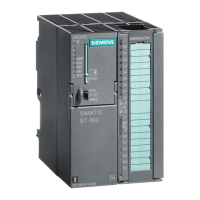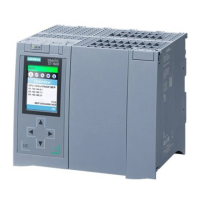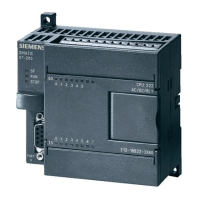Encoders
11.3 Absolute encoder
FM 352 electronic cam controller
144 Operating Instructions, 05/2011, A5E01071724-03
Example of Reaction Times
The following example shows how to calculate the minimum and maximum reaction time. In
the example a programmable encoder is not used.
● Cam cycle time: approx. 20 µs for max. 16 cams
● Switching time of the hardware: approx. 150 µs
● Frame run time: 26 µs at a baud rate of 1 MHz (25-bit frame)
● Monoflop time: 20 µs (depends on the encoder: typical 20 µs to 40 µs
Maximum reaction time = 26 µs + 20 µs + 150 µs = 196 µs
Maximum reaction time = 2 x 26 µs + 20 µs + 2 x 20 µs + 150 µs = 262 µs
Note
You can compensate the reaction time by assigning the cam parameters accordingly or
using dynamic adjustment.
Flat gain
The flat gain is equivalent to the difference between the min./max. reaction time.
With an absolute encoder it is as follows:
Flat gain = cam cycle time + frame run time + monoflop time
With a programmable absolute encoder, it is as follows:
Flat gain = cam cycle time + frame run time + monoflop time
+ 1/max. step sequence frequency
Note
If the switching time of the FM 352 hardware and of the connected switching elements can
be disregarded, reliable cam activation is always ensured if the cam is longer than the
distance covered within the cam cycle time.

